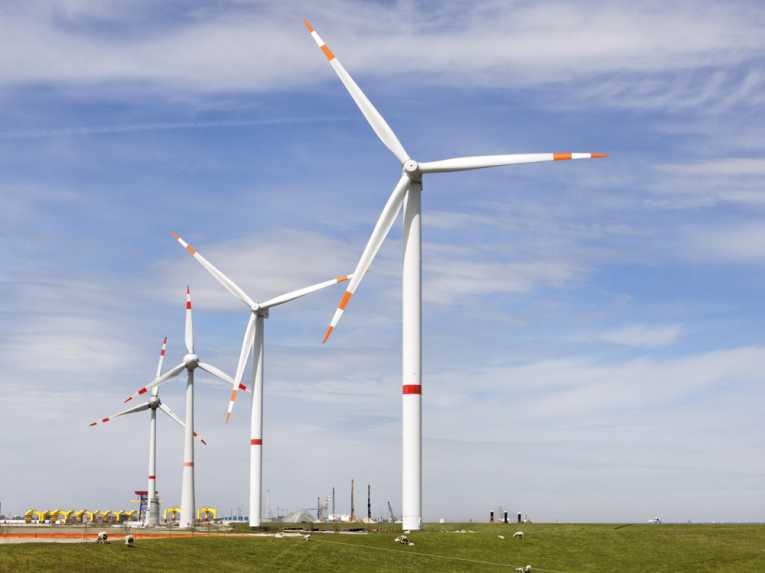Since 2007, 15thJune has been designated Global Wind Day. Starting as a European initiative, it went global in 2009 and is now co-ordinated by the European Wind Energy Association (EWEA) and the Global Wind Energy Council (GWEC), through an extensive partnership network.
This year hundreds of events, activities, competitions and workshops of all types, involving thousands of people, are being organised in over 40 countries. These are designed to illustrate the important part that wind has to play in our environment. Events are for everyone, but it is particularly hoped to interest children and their families.
The use of wind as a source of energy is nothing new. For well over two thousand years wind power has been used to grind corn, pump water and drive a wide range of industrial machines for wood and metal working. Wind-powered pumps were used to drain the Dutch polders and the English fenland. In arid regions such as the Australian Outback and the American Mid-West, wind pumps have provided water for livestock and irrigation for generations.
In cereal-growing areas of the UK, many windmills remain, some restored to working order, some in various stages of decay, but many now converted for family accommodation. Few towns and villages are without their Mill Lane or Mill Road as a reminder of former times when local farmers would bring their grain to the local mill to be ground into flour for local bakers.
So wind power is nothing new.
The introduction of machines powered by cheap and easily accessible fossil fuels led to a decline in the use of wind power, but since reserves of these fuels are finite and as the world becomes more conscious of the pollution generated by these fuels, focus has turned once again to tapping this free source of energy.
At the beginning of the present century fossil fuels were still relatively cheap, but concerns about energy security, global warming and fossil fuel depletion were already rumbling around. Attention began to turn towards renewable forms of energy and commercial wind power was one of these areas.
With the ready availability of large wind resources, interest began to grow, with a result that this fledgling industry began to expand at a rate of about 30% per year. Improved technology and better wind farm management all worked to drive down costs.
A further boost to the industry was received in 2003 after the dramatic rise in oil prices. Obviously wind power was not an immediate substitute for liquid fuels to drive motor vehicles, but as petroleum shortages began to manifest themselves, many utility and industrial users who were using coal or natural gas, began to seriously consider wind power as a substitute.
As natural gas began to have its own supply problems, wind power became a realistic alternative provider of electric power.
The past few years have seen technology develop that has enabled wind power to be used as an efficient and pollution-free means to generate electricity. Indeed, if large numbers of wind turbines can be grouped together, this can be done in an extremely efficient way.
A problem with putting large numbers of wind turbines together in one place is that many people regard them as a serious environmental blight. Passions can run high and opponents see wind farms as nothing more than destroyers of the countryside. Other people take a more relaxed view, pointing out that many years ago there was similar opposition to the high voltage pylons that spread across the country as part of the new national electricity grid. It was something that everyone learnt to live with.
Depending on your point of view, a wind farm can either ruin a beautiful landscape or be a stately addition to it.
Younger people tend to have less opposition to wind farms. In a recent pole in the UK's Independent newspaper, 80% of those questioned who were between the ages of 18 and 44 found wind farms to be a perfectly acceptable price to pay for green energy. The older generation were not quite so enthusiastic, but even 59% of the over 44 age group said they would support it. Overall, 68% of the total group questioned said that they were happy with the wind farm principle.
Although the electricity from wind farms is cheap and clean, setting-up costs can be considerable and this will generally require some form of government subsidy. In fact costs to governments are not as high as it might initially seem because substantial numbers of new jobs are created and these have the potential to bring governments significant additional income through the taxation system.
In spite of the considerable growth of this form of energy production, coupled with the fact that thousands of individuals are now involved in the industry, for many people wind energy remains a mystery. It is not widely realised that wind farms are now in operation in more than 75 countries around the world.
Hopefully on 15thJune the various activities of Global Wind Day, such as visiting wind farms, meeting experts and attending events, will give people the opportunity of finding out everything they need to know.










